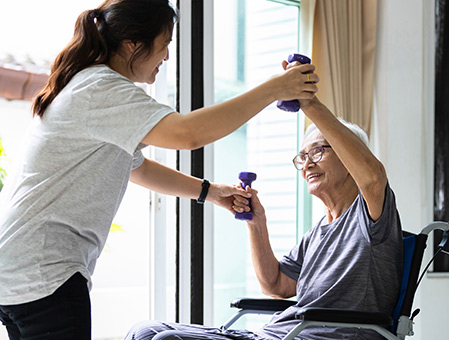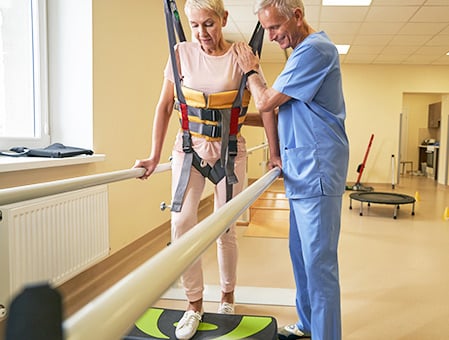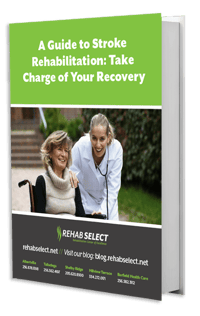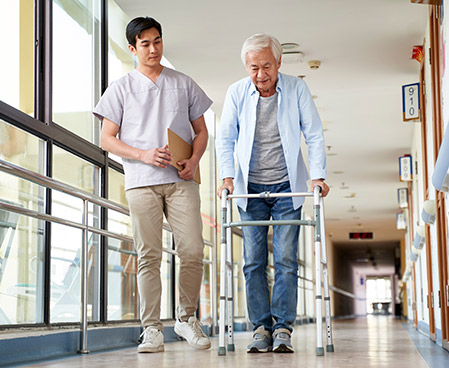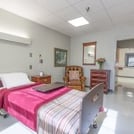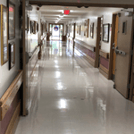SHORT-TERM REHAB | LONG-TERM CARE
Stroke rehabilitation
Strokes are an extremely common medical emergency: they happen when a vessel supplying blood to the brain cannot provide brain cells with oxygen. The long-term goal of stroke rehabilitation services, or stroke therapy, is to help stroke survivors improve their physical and cognitive functions, relearn skills they may have lost, and improve their overall quality of life.



